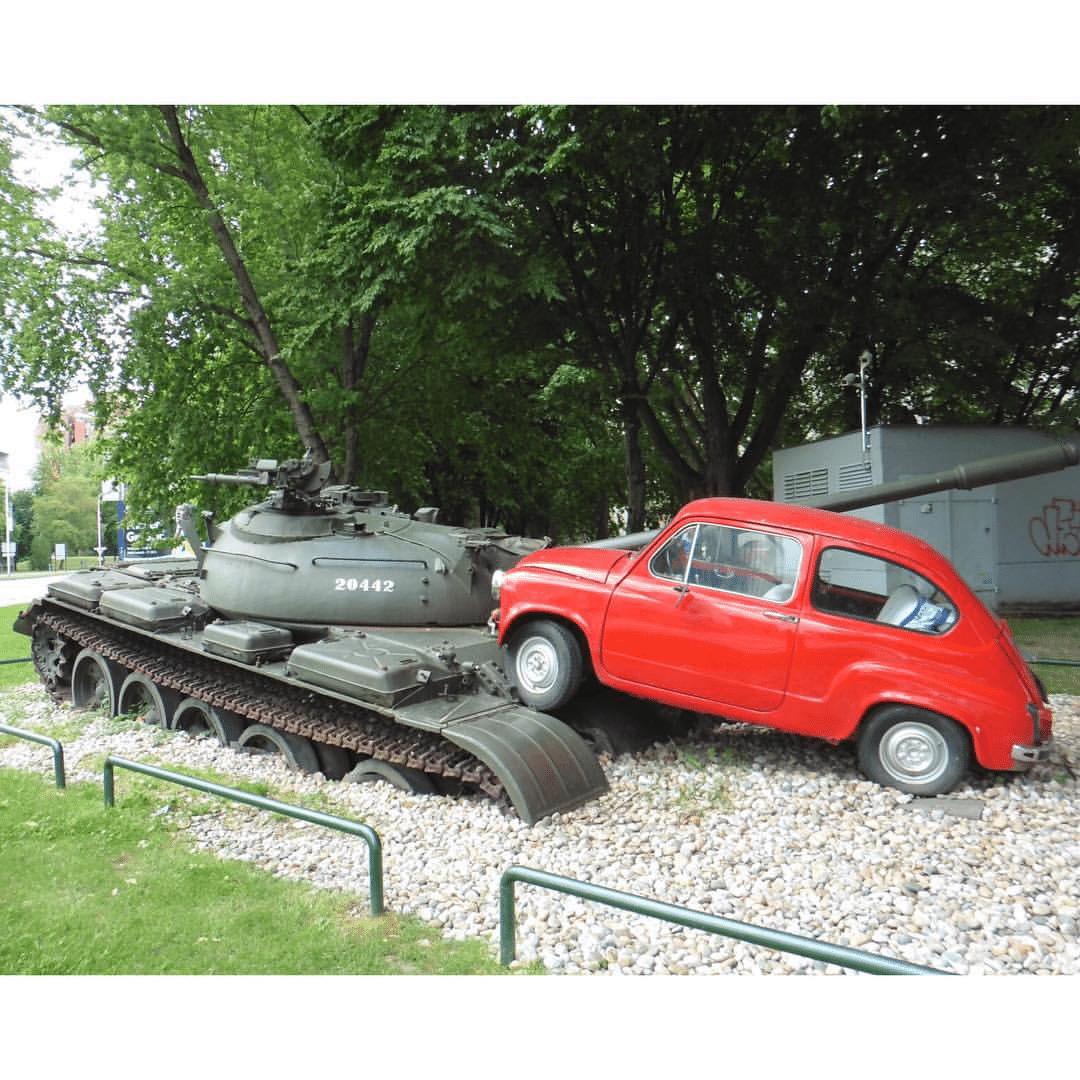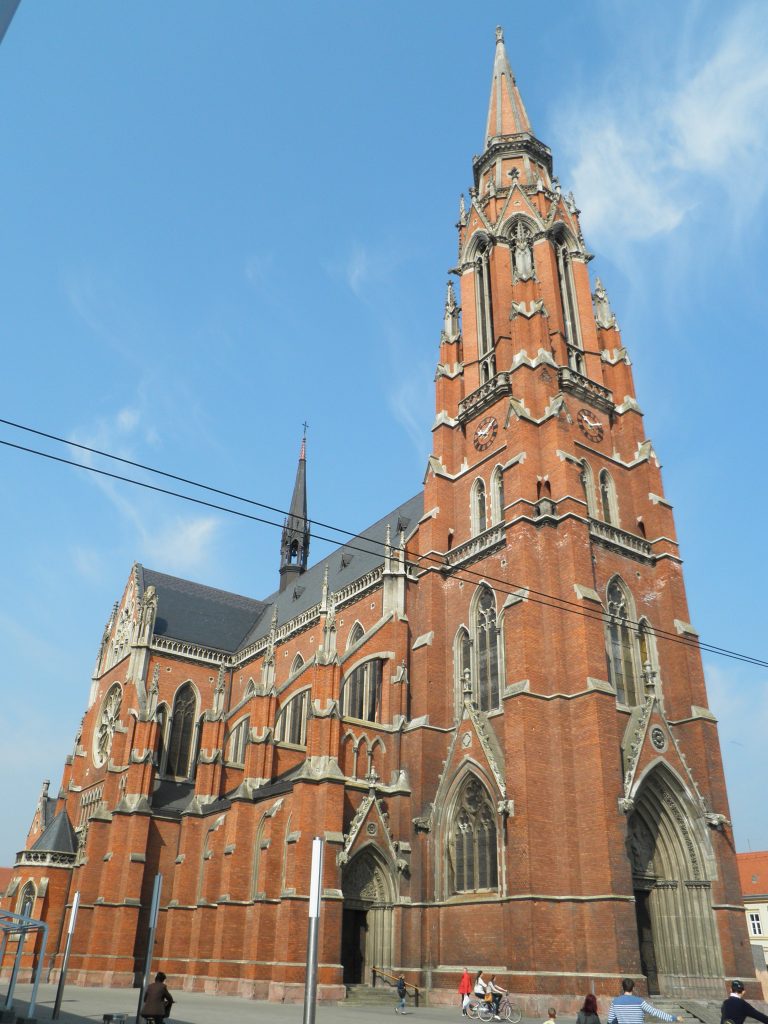Heading out of Novi Sad to Osijek this morning, we mistakenly ended up on the E 75 heading towards Subotica and the Hungarian border. When we realised our mistake we turned off towards Vrbas and headed along the smaller road.
The road passed through miles and miles of wheat, barley and corn fields with the occasional village or town surrounding a grain silo.
At Kula, a town with lovely tree-lined streets we decided to have a break at a local cafe. It was pretty slow-paced town and we kicked back watching the old Jugo cars and IMT tractors lumbering along the streets.
Around Kula the countryside was crisscrossed with a network of canals feeding the surrounding fields of wheat, canola, barley and corn
Border Crossing
Crossing the Serbian border into Croatia near Erdut was fairly easy with the local border guards just amazed at all the stamps in the passports. As we rode into Croatia we passed through acres and acres of grape vines spread across the landscape. Upon the border region, the weather is just perfect for the manufacture of Croatian wine.
Finding the Sobe Nvoi Grad in Osijek wasn’t too hard despite the satnav trying to send us on a wild goose chase. It was a nice new building set among similar buildings. A few trees in the common area between the buildings gave it a nice feel. We were greeted by the owner who in a mixture of German and Croatian showed us to a lovely newly refurbished room and gave us a few city guides. He didn’t speak much English but was using google translate to communicate. I didn’t want to disappoint him by saying I understood his German so I let him keep going.
As I was unpacking the bike a few of the locals stopped to talk and told me that the bike would be safe in front of the building. It was pretty reassuring, although I would’ve been surprised that we’d have trouble just by judging the surrounding neighbourhood.
Red Fico Osijek
After unpacking, we headed towards town, stopping on the way to view Red Fico, This unusual monument is dedicated to the city’s win over Serbian forces as they invaded the city. No. it isn’t the normal bronze statue of a man with his fist held high but still a powerful one.
When the Serbian tanks rolled across the countryside and into Osijek a local man parked his little red fiat at the crossroads as a sign of resistance. While it was destroyed by the tanks, the Serbian forces were unable to conquer the city. This one action became the city’s symbol of defiance hence Red Fico.
You can find it at the intersection of Trpimira and Vukovarska in Osijek.
Church of Saint Peter and Paul

After a few pics of the Red Fico and marvelling at this piece of history we had never heard of. We headed into the centre of the city where we parked the bike and took a look around. A quirky little American burger bar caught our eye so we stopped for a drink.
In the centre of the city is a pedestrian walkway which stretches from the Cathedral towards the river and around the corner for about one block. It’s the central stopping point for the local trams which have a lovely 1980’ish feel about them. Single and double bubble type trams painted white and edged with navy blue slowly trundle along the city streets.
The most unmissable landmark of central Osijek is the Neo-Gothic style Church of Saint Peter and Paul. At 90 metres the red brick bell tower is the second highest structure in Croatia so it’s impossible to miss. It is free to visit and well worth looking inside.
European Avenue Osijek
Leaving the Cathedral behind we headed towards European Avenue. Osijek was a trading centre during the Austro-Hungarian empire meaning there are snippets of past glories throughout the city. However, it is, as you wander along the tree-lined European Avenue looking at the large baroque style mansions this history comes alive. It gives you a glimpse of how the city revolved around trade, transporting locally grown cereal crops and wine using the Drava River.
Drava River Osijek

While the Drava river was part of the trading history of Osijek, today the city is proud of it’s green spaces. A few minutes to walk to from the city centre you find a plethora of Cycle paths and a lovely riverside walk joining up with the acres of parklands. There’s also a great variety of cafes, restaurants and bars which overlook the river. It was a nice place to have a drink and take in the view.

By Espino Family – Flickr: Tvrda Fortress, CC BY-SA 2.0, Link
Courtesy of Wikipedia Commons
We continued along the River Drava for about 20 minutes, going past the pedestrian bridge and through the gardens to the Tvrđa. The Tvrđa, is the 18th-century baroque style fortifications which protected the former centre of Osijek. Around the Tvrđa there’s still a few bullet-scarred buildings which are reminders of the dark days of the Serbia-Croatia war of the nineties.These days the Tvrđa is home to part of the Osijek University, and various schools so there’s new life in the old buildings. Around the main square, the old barracks have been transformed with bars, cafe’s, and restaurants. With all the warm sunny weather the alfresco area around the square was just jam-packed with crowds of young people and tourists.
Late in the day, we headed back along European Avenue to the city centre. After dinner in the city, it was time to call it a day and head back to the apartment. As I was cleaning and covering the bike I was quite surprised by locals stopping to tell me that the bike would be safe from theft if parked outside the building. It was quite reassuring.
Tomorrow we head to Zagreb but after a brief visit to Osijek wished we were staying here a bit longer.
All our posts may contain affiliate links we do receive a small payment if you buy from them but you will not be charged more for doing so. This helps us keep the website going for your enjoyment. You can view our Privacy Policy here.








One thought on “Novi Sad to Osijek”